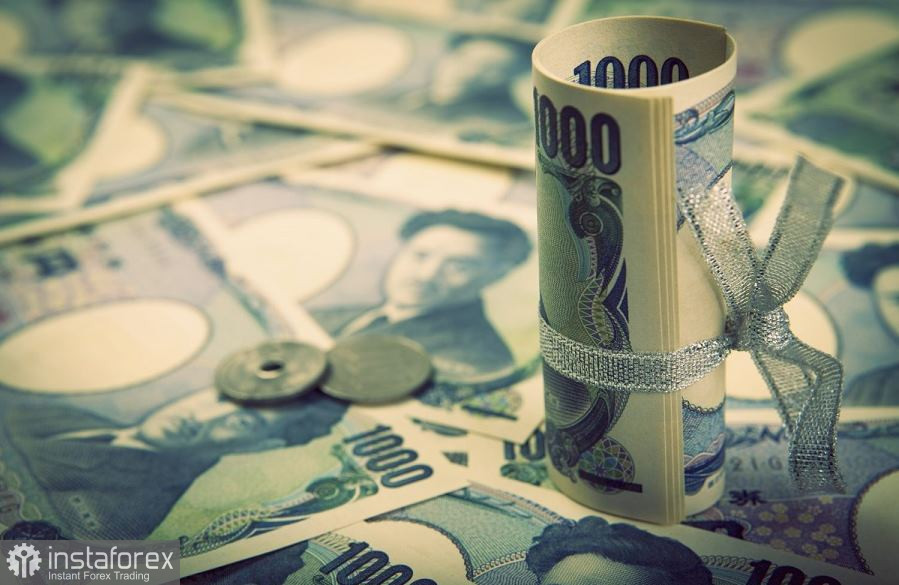The past week has been disastrous for dollar bulls. The "red color" of the inflation release brought down the US currency throughout the market. The US dollar index dropped to 106 points, despite the fact that in early November it stormed the 113th figure. The decline in hawkish expectations regarding the pace of tightening of the Federal Reserve's monetary policy occurred simultaneously with a decrease in anti-risk sentiment in the markets (which also supported the greenback). The result was not long in coming: the demand for the dollar dropped sharply, thanks to which the main currency pairs of the "major group" were able to change their configuration accordingly.
The dollar-yen pair is no exception here. USD/JPY bears were able to organize a powerful attack to the downside – at the end of Friday's trading, the price had already updated a 2.5-month low, having been designated at 138.80.

Let me remind you that after the last currency intervention by the Japanese authorities, the pair traded in a wide price range for several weeks, the lower limit of which corresponded to the level of 145.50, the upper at 149.00. Bulls did not dare to overcome the limit of this range, so as not to approach the conditional "red line" (150.00 and above). Most experts of the foreign exchange market agreed that overcoming this target will provoke a response from the Japanese authorities. In September (and before that – in the 90s), the corresponding limit was located lower – in the area of 146-147 figures. But apparently, after the disappointing September intervention (the price of USD/JPY almost immediately returned to previous levels), the Japanese Ministry of Finance decided to move the "limit of what is allowed". Traders, so to speak, accepted this condition: since the October intervention, the pair has not crossed the 150.00 mark, even during periods of general strengthening of the US currency.
And if the fate of the upper limit of the 145.50-149.00 range was predetermined (at least in the medium term), then the question of the "stability" of the lower limit was in limbo.
It should be emphasized right away: a downward trend (namely, a trend, and not an impulsive decline due to, for example, currency intervention) is possible only in the event of a large-scale weakening of the US currency. The yen is a priori unable to "pick up the falling banner" – it is unable to independently put pressure on the pair if the dollar index is gaining momentum at the same time. Therefore, the prospects for the downward movement of the pair should be viewed through the prism of the overall prospects of the US currency.
It is obvious that the dollar was under strong pressure after the release of the inflation report, which reflected a slowdown in the growth of the consumer price index in the United States. Then the domino effect followed: the Fed representatives began to "directly" voice calls for slowing down the pace of rate hikes, after which the probability of implementing a 75-point scenario at the December meeting decreased to 15%. Let me remind you that before the inflation release, this probability was 48%, that is, by and large, traders estimated the probability as 50/50. But US inflation has dashed the hopes of dollar bulls. And after several representatives of the Fed (Esther George, Mary Daly and Patrick Harker) actually supported a rate hike of only 50 points in December, this issue lost any bit of intrigue.
So, now we can talk about a slowdown in the pace of tightening of the Fed's monetary policy, starting from the next meeting, as a fait accompli. But what does this change in the context of the USD/JPY pair? Fundamentally, nothing. If we abstract from emotions (which are provoked mainly by the effect of surprise after the "red" inflation release), then we can draw an obvious conclusion that the bears' positions remain very vulnerable – primarily due to the continued divergence of the Fed and the Bank of Japan rates. This fundamental factor was the locomotive of the USD/JPY upward trend this year.
It should be emphasized here that the Fed is only slowing down the pace of rate hikes, while there is no talk of curtailing the hawkish rate. Moreover, Fed Chairman Jerome Powell has repeatedly stated that the central bank will tighten monetary policy and keep rates at a high level even when US inflation shows signs of slowing down. This suggests that the Fed will continue to systematically raise the rate in 50-point increments, at least to a 5% level. And given Powell's recent statements, the central bank may exceed this target.
While BOJ Governor Haruhiko Kuroda has repeatedly stated that the Japanese central bank will not follow other central banks of the leading countries of the world and will not normalize monetary policy in the foreseeable future. According to most analysts, the Japanese central bank will keep rates at the current level and continue large-scale stimulation at least until the spring of 2023. Experts attribute possible changes to the fact that Kuroda is guaranteed to leave his post in April next year (his second term in office expires).
But April is still far away, and there is no doubt that the divergence of the rates of the Fed and the BOJ will continue in the foreseeable future.
In my opinion, traders' emotions related to the latest events will settle down next week. The pressure on the greenback will weaken, after which USD/JPY bulls will be able to organize a bullish counteroffensive, since in general, the fundamental factors for the pair remain on the dollar's side. Therefore, from the current positions, it is advisable to consider long positions while aiming for 141.70 (the lower line of the Bollinger Bands indicator on the daily chart) and 143.80 (the upper limit of the Kumo cloud on the same timeframe).





















